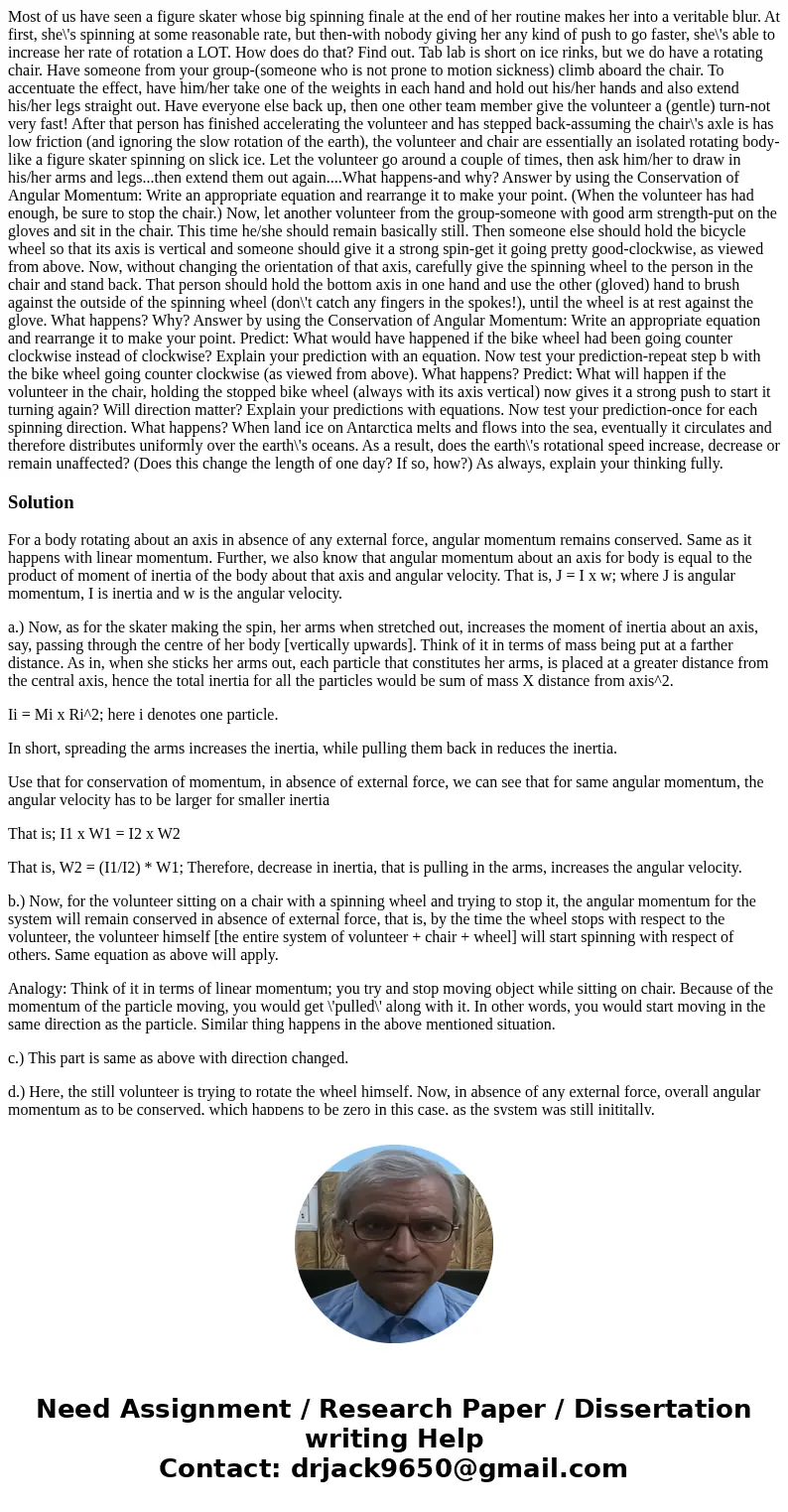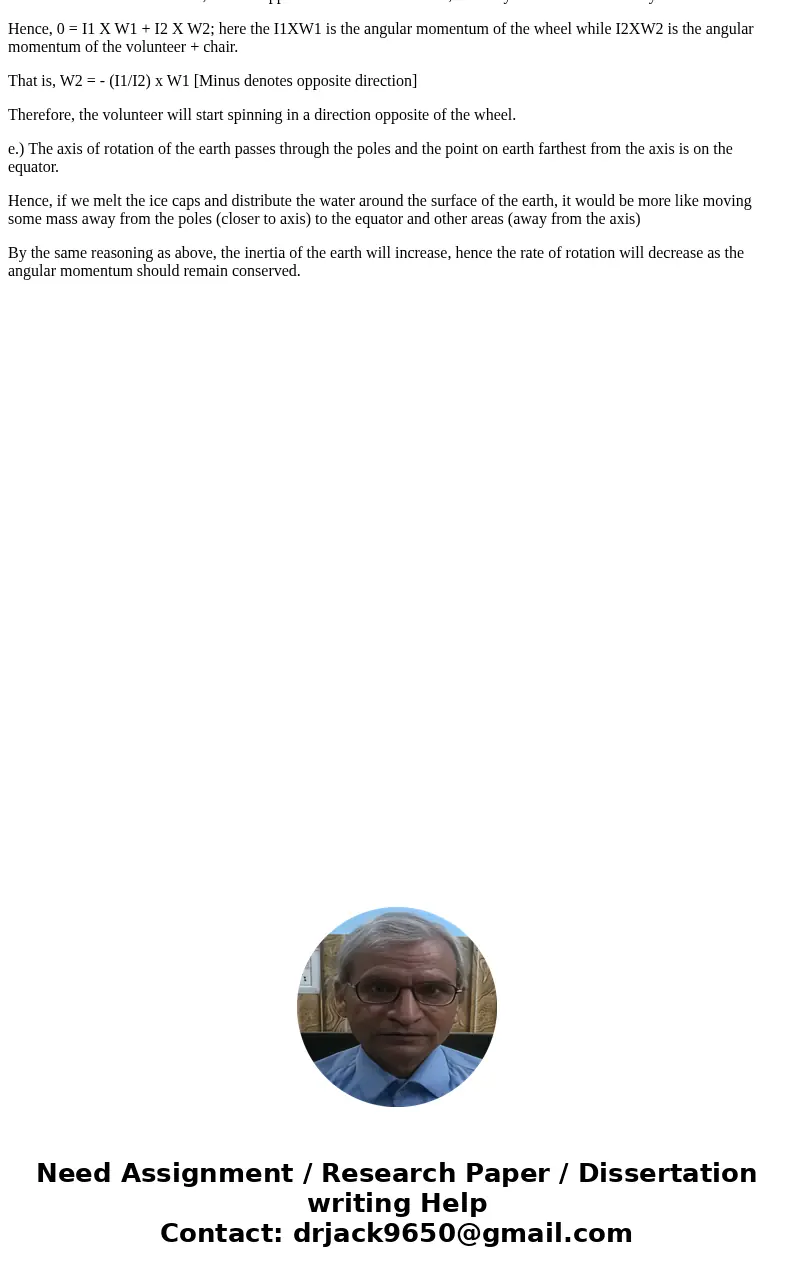Most of us have seen a figure skater whose big spinning fina
Solution
For a body rotating about an axis in absence of any external force, angular momentum remains conserved. Same as it happens with linear momentum. Further, we also know that angular momentum about an axis for body is equal to the product of moment of inertia of the body about that axis and angular velocity. That is, J = I x w; where J is angular momentum, I is inertia and w is the angular velocity.
a.) Now, as for the skater making the spin, her arms when stretched out, increases the moment of inertia about an axis, say, passing through the centre of her body [vertically upwards]. Think of it in terms of mass being put at a farther distance. As in, when she sticks her arms out, each particle that constitutes her arms, is placed at a greater distance from the central axis, hence the total inertia for all the particles would be sum of mass X distance from axis^2.
Ii = Mi x Ri^2; here i denotes one particle.
In short, spreading the arms increases the inertia, while pulling them back in reduces the inertia.
Use that for conservation of momentum, in absence of external force, we can see that for same angular momentum, the angular velocity has to be larger for smaller inertia
That is; I1 x W1 = I2 x W2
That is, W2 = (I1/I2) * W1; Therefore, decrease in inertia, that is pulling in the arms, increases the angular velocity.
b.) Now, for the volunteer sitting on a chair with a spinning wheel and trying to stop it, the angular momentum for the system will remain conserved in absence of external force, that is, by the time the wheel stops with respect to the volunteer, the volunteer himself [the entire system of volunteer + chair + wheel] will start spinning with respect of others. Same equation as above will apply.
Analogy: Think of it in terms of linear momentum; you try and stop moving object while sitting on chair. Because of the momentum of the particle moving, you would get \'pulled\' along with it. In other words, you would start moving in the same direction as the particle. Similar thing happens in the above mentioned situation.
c.) This part is same as above with direction changed.
d.) Here, the still volunteer is trying to rotate the wheel himself. Now, in absence of any external force, overall angular momentum as to be conserved, which happens to be zero in this case, as the system was still inititally.
Hence, 0 = I1 X W1 + I2 X W2; here the I1XW1 is the angular momentum of the wheel while I2XW2 is the angular momentum of the volunteer + chair.
That is, W2 = - (I1/I2) x W1 [Minus denotes opposite direction]
Therefore, the volunteer will start spinning in a direction opposite of the wheel.
e.) The axis of rotation of the earth passes through the poles and the point on earth farthest from the axis is on the equator.
Hence, if we melt the ice caps and distribute the water around the surface of the earth, it would be more like moving some mass away from the poles (closer to axis) to the equator and other areas (away from the axis)
By the same reasoning as above, the inertia of the earth will increase, hence the rate of rotation will decrease as the angular momentum should remain conserved.


 Homework Sourse
Homework Sourse